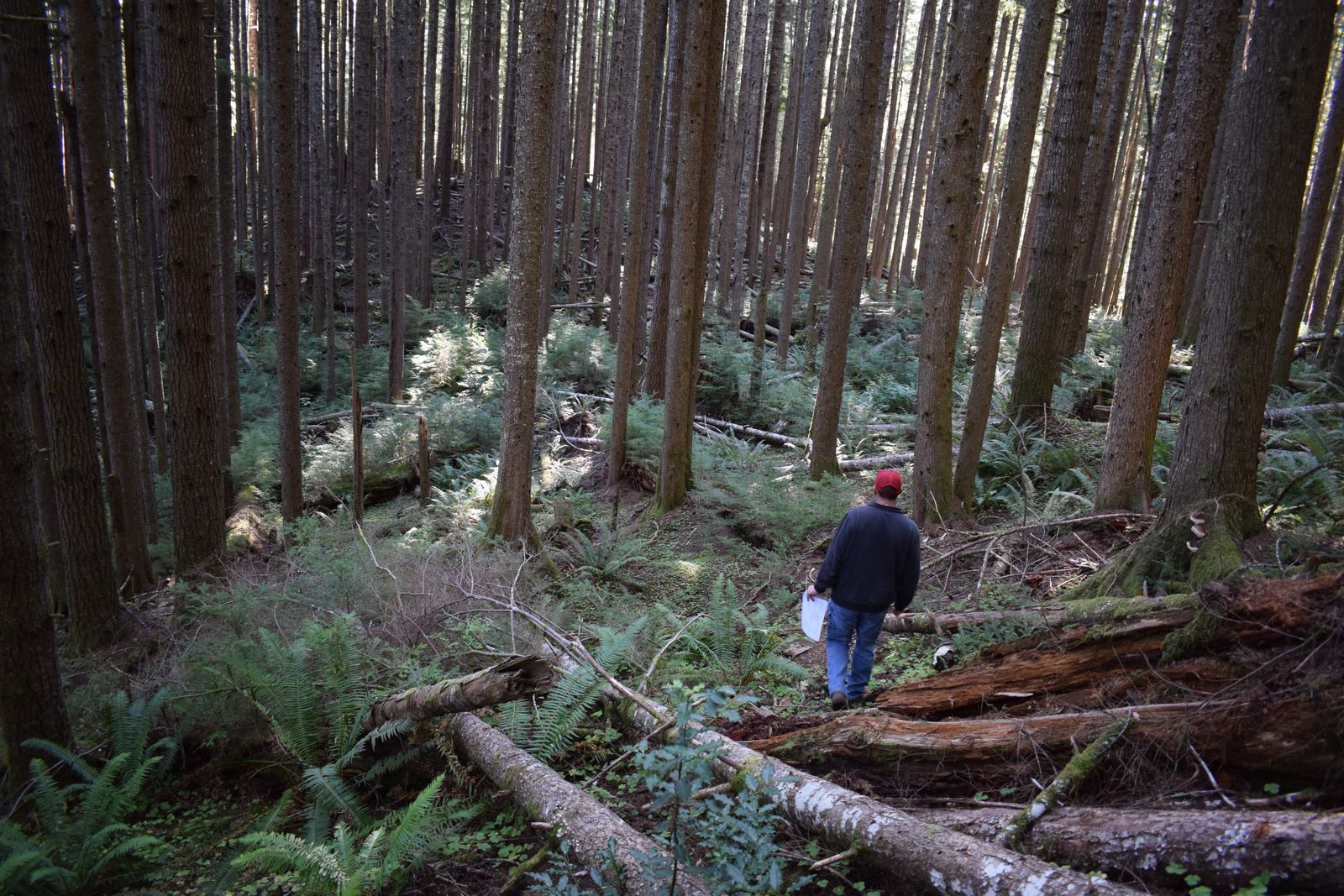Oregon Department of Forestry (ODF) managed State Forests are a particularly important source of timber for Hampton’s sawmills. ODF harvests a portion of these lands to provide revenue for schools and other public services and cover the cost of forest protection and recreational access. State Forest timber sales are planned and advertised by ODF. Each harvest unit has a name, and much like the titles given to race horses or nail polish colors, they can be both personal and perplexing. Names range from the obvious (“Rocky”) to the cryptic (“Apparently Not”) and include what can be assumed to be the occasional inside joke (“Moo Goo Gai Pan”). When state foresters offer timber sales, they release detailed maps and potential buyers head out to do reconnaissance. These visits to the proposed harvest unit are to confirm volume estimates and determine what would be needed (in terms of expertise and resources) to get the wood out. All this information informs the amount a prospective buyer is willing to bid for the sale.

Sawmill companies like Hampton have foresters who go out and survey these sales. These individuals help ensure a steady and quality supply of timber for our mills. I recently joined Hampton forester, Dave Kunert on a visit to an ODF timber sale outside of Tillamook, Oregon. Dave has spent over 20 years in the business of trees. He moves along the forest floor in what I can best describe as a controlled stumble. It looks reckless but he never loses his footing and he moves with surprising speed. I on the other hand, trip over clumps of ferns and sink in duff. I try to keep pace but I find myself unintentionally sitting—a lot. This work, ironically called timber “cruising” feels a lot like running on dry sand. I’m winded immediately upon entering the forest and nursing an eye wound from an errant salmonberry branch. I grew up in the temperate rainforests along Oregon’s central coast. I’m accustomed to this environment. I am, however, unfamiliar with what it takes to work in it.
As we lumber through the underbrush, Dave assesses slope, water resources, and potential access points. He is imagining how the harvest will need to be laid out, what kinds of equipment and how many people will be needed. Can this work be done economically and safely? He spends a lot of time looking up into the canopy to confirm tree size and composition. My eyes, on the other hand, are fixed on the forest floor. At first, my focus was due to a fear of falling into some secret forest abyss. After stumbling onto an abundance of chanterelle mushrooms, however, my priorities shifted. I became a prospector. Without a bag, I stuff handfuls of the dusty yellow fungi into my pockets. I briefly consider asking Dave to let me use his jacket as a sack but he’s long since disappeared over the next ridgeline.
Dave has viewed millions of acres of timberland throughout his career, both public and private (and undoubtedly passed over hundreds of pounds of chanterelles). What drew him to this work? The woods, the people, and the challenge.
Timber procurement is certainly challenging work—physically and mentally. Bids placed by purchasers are often blinded so potential buyers don’t know who else has bid or how much they’ve offered. It’s a constant gamble. You don’t want to overpay for the wood available but you also need to maintain a reliable timber supply for the sawmills. Dave recalls a sale he lost years ago over mere pennies. It still haunts him.
I left the forest that day with the makings for dinner and a deep appreciation for these forests and for the knowledge and effort put forth by foresters like Dave to keep our sawmills humming away.
More information on ODF’s timber sale program: ODF Working Forests
My favorite chanterelle recipe: Chanterelles on Toast


